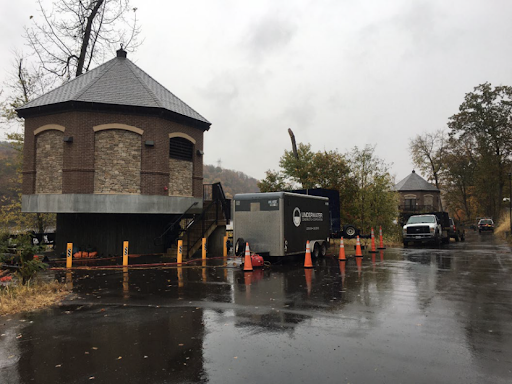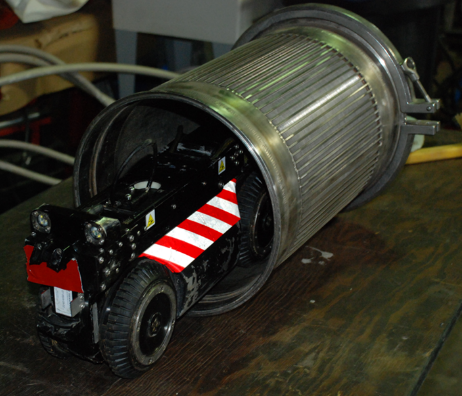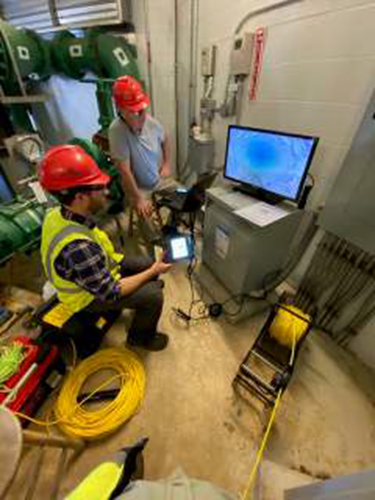UMPS Assessment & Flow Restoration of Ranney Well Radial Collector Laterals at Connecticut River Power Plant
Project Type
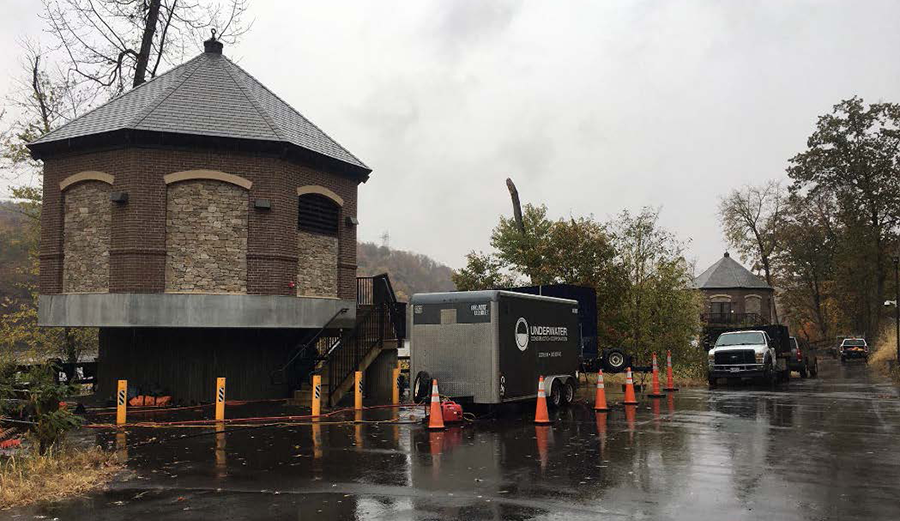
Project Description
The Challenge
Cooling water intake cleaning is a continual challenge for power plants. But what happens when the cooling water intakes are screened laterals that are the heart of a Ranney Radial Well System?
The Kleen Energy power plant in Connecticut has two Ranney Vertical Wells supplying their cooling water, which have been in continual use for over 10 years. The plant began to experience growing inefficiencies with their Ranney Well No. 1 critical cooling water intake structure, with deterioration of water clarity. The plant’s raw water, green sand filters were rapidly overloading with sediment, reducing flows, creating significant maintenance issues and operational constraints.
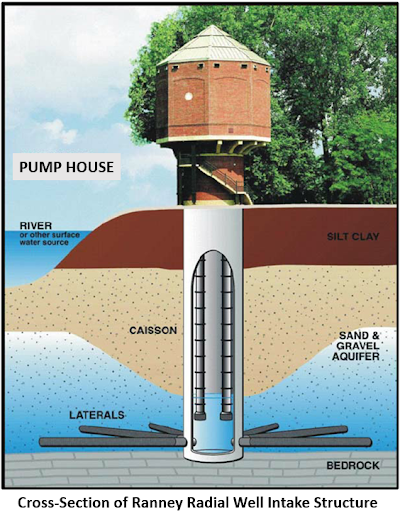
Kleen Energy hired Underwater Mineral Processing Services (UMPS), a division of Underwater Construction Corporation (UCC), to assess the causes of this inefficiency and develop a turnkey solution for the rehabilitation of the Ranney Collector Well screened laterals.
The Project
UMPS and UCC employed their extensive experience in power plant diving and water intake maintenance services, along with a portable process for water analysis and treatment systems, to rapidly assess the root cause of the reduced flow volume from within the blinded laterals.
UPMS’s SmartFeed™ chemical conditioning mobile unit was deployed to continually monitor flow rate and turbidity through each of the radial laterals of the Ranney Collector Well. This information was used to identify underperforming laterals, inform Kleen Energy’s power plant operation team and enable them to determine remediation strategies. The accrued data on the transmissivity of the tested laterals permitted UMPS to develop a phased approach for rehabilitation of flow and water quality in the affected screened laterals.
The first phase was a thorough diver inspection of water pumps and vertical well structure elements. UCC developed a comprehensive site safety plan for the confined diver operations within the deep well caisson. UMPS provided Kleen Energy with a detailed underwater video record of the Ranney Well infrastructure’s operational condition and integrity.
The second phase was inspection by diver-deployed, remotely operated video camera crawler unit into each of the 12-inch diameter screened lateral pipe. The reconnaissance data accurately determined the overall length of the screen pipes. It also identified mechanical deficiencies in the screen pipes, such as collapsed screen sections, screen weld seam breaks, sediment intrusion, and mineral depositional fouling.
The third phase focused on the identification and quantification of each radial lateral deficiency for hydraulic flow and sediment and turbidity contribution. Using Supervisory Control and Data Acquisition (SCADA) collection, analysis and information management, flow and turbidity were accurately graphed during each controlled hydraulic demand test of each screen pipe lateral.
The Outcome
UMPS/UCC developed and implemented a phased technical approach defining and quantifying the factors contributing to decreased flow rates and deteriorated water quality of the Ranney Collector Well.
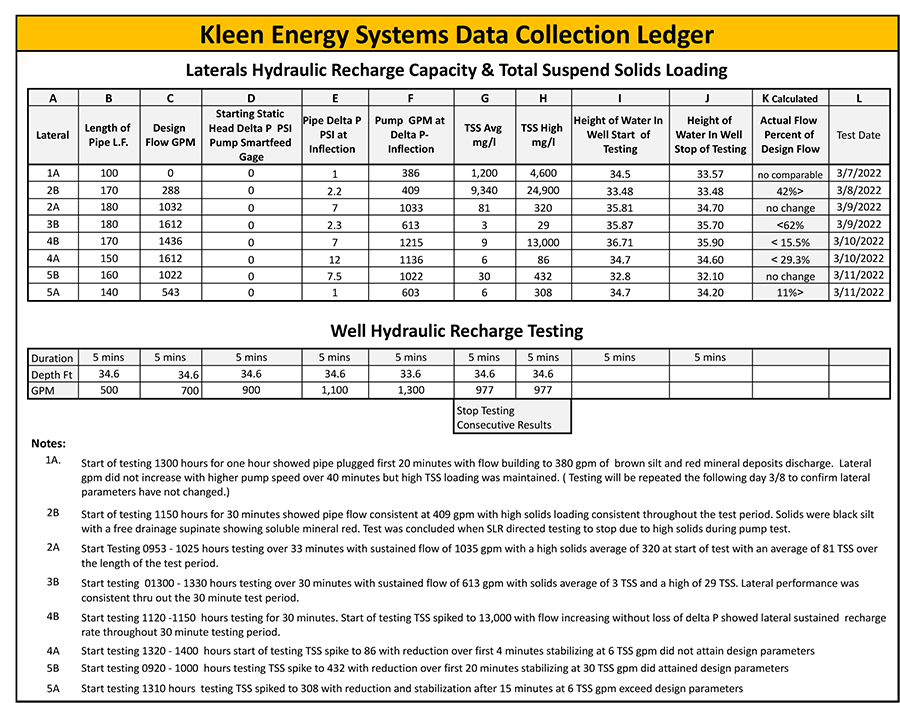
The customer was provided detailed documentation identifying which of their Ranney Well laterals were underperforming in flow transmission and/or contributing to excessive sediment turbidity. These conclusions permitted the client the opportunity to isolate a poorly performing screened lateral, until a rehabilitation/restoration task could be initiated.
The results of the SmartFeed™ System’s Flow Rate / Total Suspended Solids test on five of the Kleen Energy Ranney Well laterals are presented in the Data Collection Ledger below.
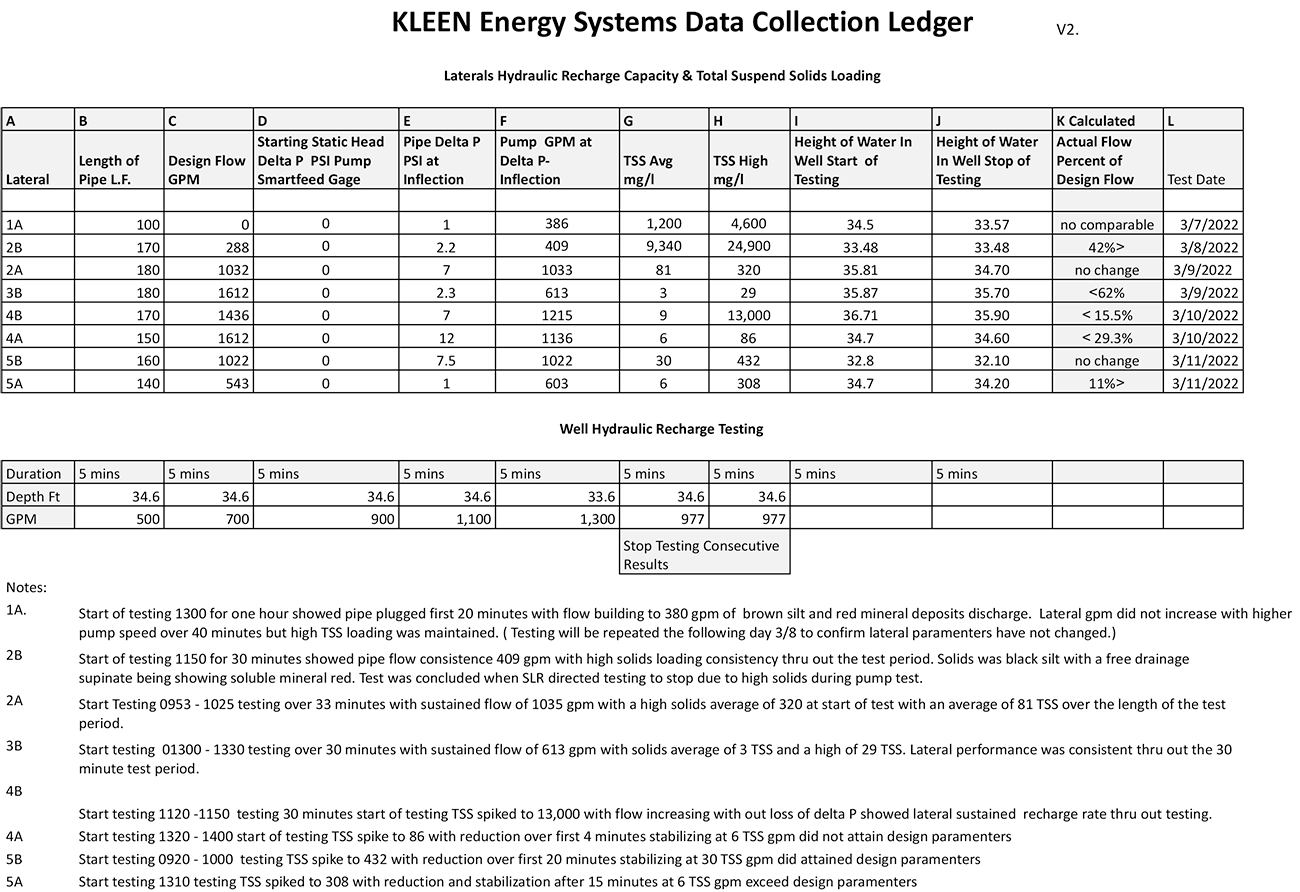
The following observations were drawn from the data set:
- Six remaining laterals after flushing showed a substantial decrease in total suspended solids.
- Laterals’ hydraulic capacity will significantly increase after water jetting of the mineral deposit build-up at the screen pipe interface.
- Vertical well static level testing showed a pump rate of 977 gallons/minute of the combined six laterals is the inflection point of well recovery rate.
- The bottom of the well has an estimated 6 inches of accumulated sediment or 6.9 cubic yards
- Laterals 1A and 2B contribute the highest solids loading. UMPS recommended isolation of these laterals after testing.
Jeff Erksa, Kleen Energy’s Maintenance Supervisor, completed a well operation review several months after phases one and two. He stated, “The well performance was within plant parameters, and the phased approach of the UMPS/UCC team was instrumental in a safe and cost-effective analysis of the Ranney Well rehabilitation.”
All laterals within the Ranney Well were flowed tested, comparing new and existing gallon per minute capacities with expected total suspended solids (TSS) for each lateral. With this detailed performance data, the customer was able to decide if the current well hydraulic capacity and prevailing TSS contributions to the power plant’s raw water sand filters fell within acceptable operating parameters, or decide to abandon a lateral or consider a restoration solution if it was not.
Once Kleen Energy completed these reviews, it could decide to either continue with the current deteriorated operational parameters or move to Phase Four: Remove sediment and mineral deposits using high-pressure / high-volume jetting, surgical filtration of liberated screen debris, and real-time confirmation of restored screened lateral flow.
As the largest inland commercial diving services company in the United States, Underwater Construction Corporation and Underwater Mineral Processing Services has a staff of over 200 divers, supervisors and project managers operate from multiple regional locations in Connecticut, Maine, Maryland, Michigan, South Carolina, Tennessee, Texas, Wisconsin and the United Kingdom. Through our global network of offices and associates, UCC has performed projects in over 25 countries.
Contact Jim Meagher at 207.741.2955 / [email protected] for any of your Ranney Well radial lateral flow/condition assessment and restoration needs.
